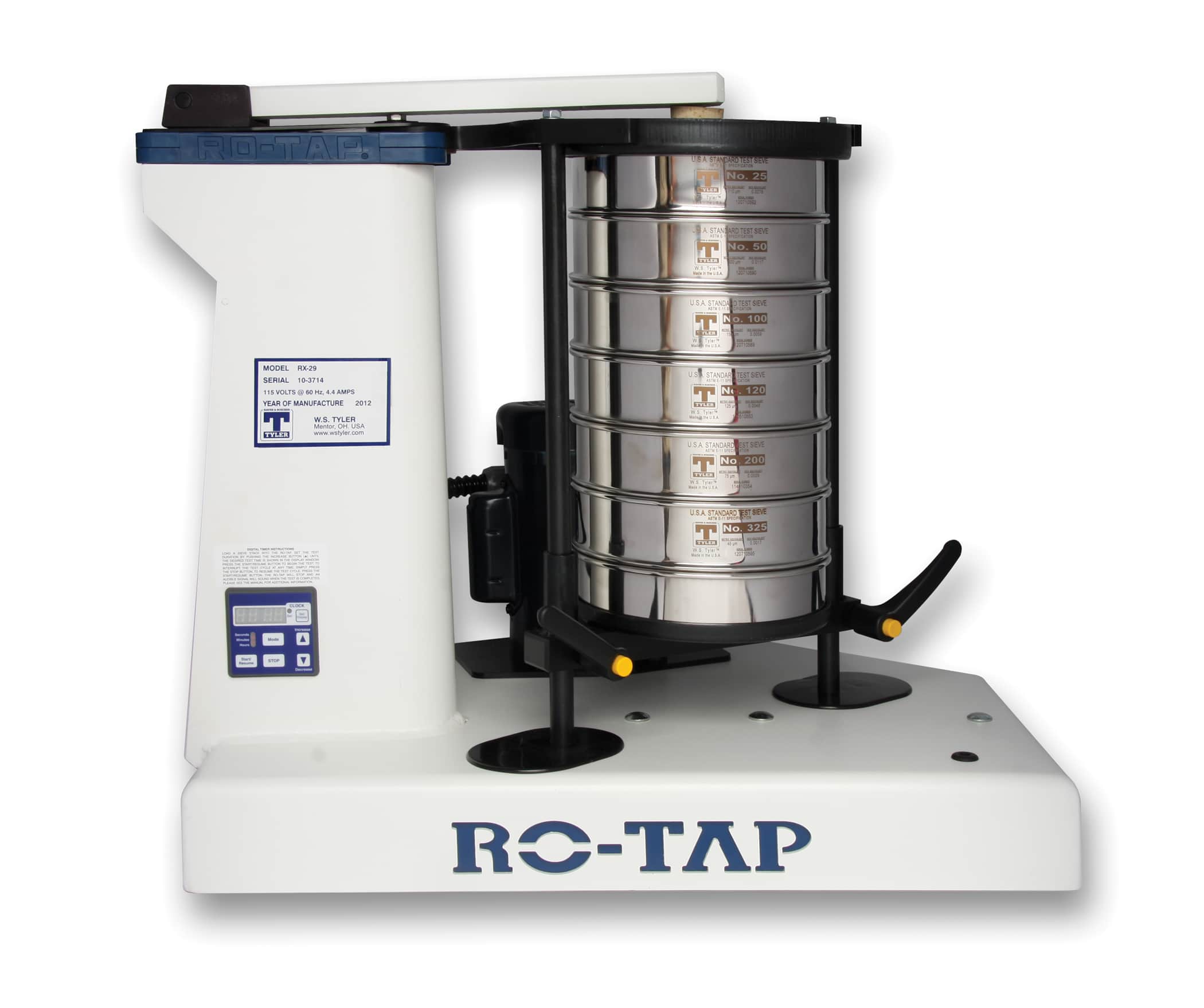What Is a Sieve Shaker? (Definition, Types, and Cost)
Test sieve analysis is a centuries-old particle analysis method that manufacturers use as a means of quality control. When conducted correctly, it works to provide insight into the size range of the particle throughout a given production line.
As you should fine-tune your process based on the results you gather, you must employ the right equipment to ensure you obtain accurate and repeatable results. This includes identifying a sieve shaker that suits your needs and adheres to your industry standards.
So, what is a sieve shaker?
W.S. Tyler is known for being the creators of the original RO-TAP® Sieve Shaker, and we strive to use our 140 years of experience to help customers confidently navigate the particle size analysis industry.
To that end, this article will provide insight into:
- What a Sieve Shaker is
- The types of sieve shakers
- How a sieve shaker works
- How to identify a sieve shaker that works best for you
- How much sieve shakers cost
What Is a Sieve Shaker?
Sieve shakers are devices designed to help promote particle movement through a stack of sieves, facilitating accurate particle separation. As the particle separate, they are retained on the various sieves depending on their size, providing insight into the average particle size of your sample.
What Types of Sieve Shakers Are There?
There are a variety of sieve shakers designed to test a specific category of material. Having said that, there are two types of sieve shakers that are predominantly used throughout the particle analysis industry: mechanical sieve shakers and electromagnetic sieve shakers.
Mechanical Sieve Shakers
Mechanical sieve shakers are sieve shakers that utilize several moving parts to oscillate, tap, and otherwise agitate the sieve stack to help the particle find openings in the mesh. While these machines may not have the latest technology, they are relatively easy to use and are often reflected in various industry standards.
Electromagnetic Sieve Shaker
Electromagnetic sieve shakers are devices that employ an innovative three-dimensional elliptical motion to help facilitate particle movement throughout your stack of test sieves. As they do not rely on the various moving parts seen in a mechanical sieve shaker, electromagnetic shakers are vastly quieter during testing.
How Does a Sieve Shaker Work?
While mechanical and electromagnetic sieve shakers are designed to identify the size range of the particles throughout your production line, the way in which they operate is different.
Mechanical Sieve Shaker
Mechanical sieve shakers utilize a motorized system to create a series of collaborative motions to agitate the sieve stack. This motor either creates a singular oscillating motion, as seen in the W.S. Tyler RO-TAP RX-812, or a dual oscillating and tapping motion, as seen in the W.S. Tyler RO-TAP RX-29.
Each sieve shaker variant is designed to deliver a certain number of oscillations and, if applicable, taps per minute. That said, most sieve shakers available today feature a digital timer that allows operators to set the designated testing time according to a thorough end of sieve analysis.
Electromagnetic Sieve Shaker
Electromagnetic sieve shakers pair a heavy-duty magnet and spring that work together to displace the device’s sieve plate, creating the three-dimensional elliptical motion. This is possible as, during operation, the magnet is electrically charged and discharged several times, resulting in the spring compressing and decompressing rapidly.
This creates ultrasonic vibrations that create its unique 3D motion. As the sieve stack is agitated, the particles are moved in a flat plain while jumping up and down simultaneously.
What Sieve Shaker Should I Use?
As stated above, there are various sieve shakers on the market, each designed with a specific grade of material in mind. That said, determining which shaker is right for you ultimately comes down to two factors: the material you are testing and the diameter of your sieves.
Sieve shakers are designed to test anything from coarse aggregate to fine materials such as flour. That said, certain test sieves work better than others, depending on the size of the particle you are working with.
For example, the RX-29 is ideal for particles ranging from 2” down to 20 microns, whereas the RX-812, which uses a singular oscillating motion, is ideal for particles 150 microns and larger.
You should use this information in conjunction with the diameter of your sieves, as not all sieve shakers can fit all sieve diameters. The RX-29, for example, is designed to test sieves with an 8-inch diameter, while the RX-30 is designed to work with test sieves with a 12-inch diameter.
To that end, the best way to identify which sieve shaker is right for you is to refer to your industry standards, as they will have insight into the specification your operation should feature.
How Much Does a Sieve Shaker Cost?
The price of a sieve shaker naturally is on a model-by-model basis. That said, W.S. Tyler currently offers four mechanical sieve shakers and three electromagnetic sieve shakers.
The price of these models can give you an idea of how much you can expect to pay for similar devices.
Mechanical Sieve Shakers
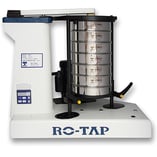 RO-TAP RX-29 and RX-30
RO-TAP RX-29 and RX-30
Standing as two of the most widely used sieve shakers, the RX-29 and RX-30 mechanical sieve shakers are reflected in dozens of industry standards. It should be noted that that the RX-29 is designed to test 8-inch test sieves, with the RX-30 designed to test 12-inch sieves.
When using a test sieve reduction kit, the RX-29 can also test 3-inch and 6-inch test sieves.
RO-TAP RX-29: $3,652.85
RO-TAP RX-30: $4,179.06
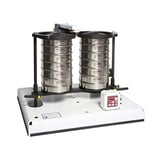 RX-94 Duo
RX-94 Duo
The RO-TAP RX-94 Duo is unique in the fact that it allows lab technicians to test two stacks of 8-inch sieves simultaneously. That said, this model uses identical oscillating and hammer tap motions utilized by the RX-29 and RX-30.
Price: $6,048.61
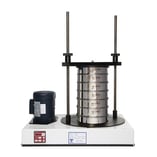 RX-812 Coarse Sieve Shaker
RX-812 Coarse Sieve Shaker
The RO-TAP RX-812 was designed to test coarse material that is 80 mesh and larger, such as various aggregates. This particular device uses a singular oscillation motion and comes with an adapter that allows lab technicians to use 8-inch and 12-inch test sieves.
Price: $1,917.75
Electromagnetic Sieve Shaker
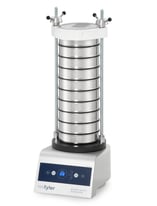 RO-TAP E Pure
RO-TAP E Pure
The RO-TAP E Pure is an electromagnetic shaker that offers two amplitude settings: a fine particle setting and a coarse particle setting. This helps create an easy-to-use test sieve analysis that is ideal for dry materials.
This RO-TAP E Pure is compatible with 8-inch and 12-inch test sieves.
8": $6,393.71
12": $10,685.24
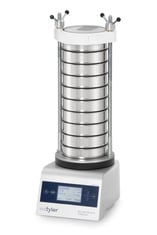 RO-TAP E Premium
RO-TAP E Premium
The RO-TAP E Premium has identical functions as the RO-TAP E Pure. The most significant difference is that the premium unit features a control panel that allows lab technicians to customize the amplitude used to agitate the sieve stack, making for a more tailored sieve analysis.
Additionally, this model is also designed to test dry material using 8-inch and 12-inch test sieves.
Price: $7,536.32
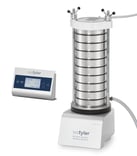 RO-TAP E Premium Remote
RO-TAP E Premium Remote
The RO-TAP E Premium Remote is perfect for those who want the minimal, efficient qualities of an electromagnetic sieve shaker without losing the ability to conduct a wet sieve analysis. This particular model features a two-hose system that allows water to flow through the sieve stack and drain.
This device is designed to connect to a water source, so the control panel is isolated from the main body.
Price: $8,851.55
Better Understand the Difference Between Electromagnetic and Mechanical Sieve Shakers
Sieve shakers are devices used to conduct test sieve analysis by agitating a stack of sieves, helping the particle of your sample find the mesh openings of the sieves. With dozens of sieve shaker variations to choose from, it is vital that you select a device that will provide results that comply with industry standards.
To help with the decision-making process, you must gain a comprehensive understanding of how electromagnetic and mechanical sieve shakers differ. This helps ensure the sieve shaker you select can adequately leverage the test sieve you purchase and accurately test the material you work with.
As a prominent leader in the particle analysis industry, W.S. Tyler has developed decades of sieve shaker experience and takes pride in educating customers on what to look for in a sieve shaker.
For more information on how electromagnetic and mechanical sieve shakers compare, read the article:
About Ronnie Brown
Ronnie is the Content Writer for W.S. Tyler and has four years of experience as a professional writer. He strives to expand his knowledge on all things particle analysis and woven wire mesh to leverage his exceptional writing and graphic design skills, creating a one-of-a-kind experience for customers.

